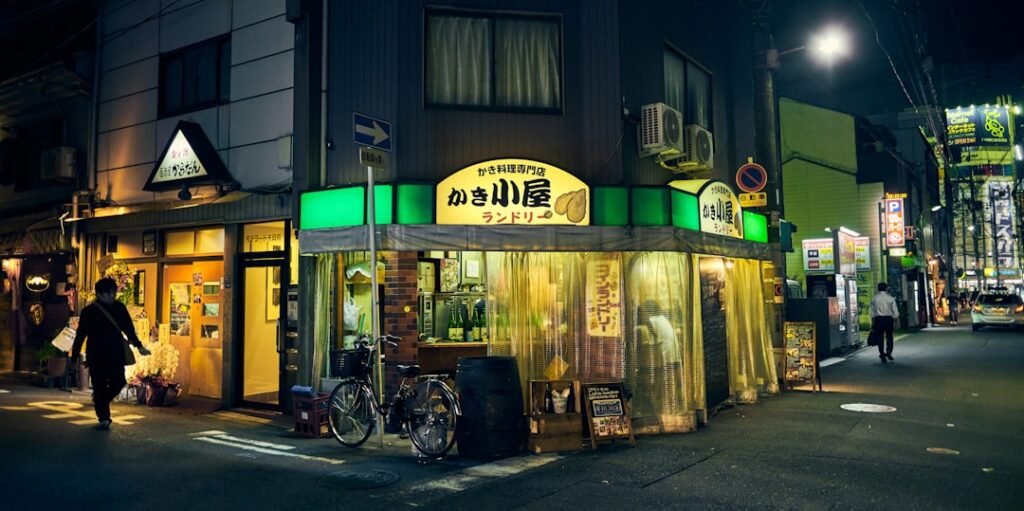Japan’s traditional sweets, wagashi, have charmed locals and travelers for centuries with their seasonal beauty, delicate flavors, and intricate craftsmanship. But now, Tokyo is witnessing a “sweet revolution”—a new generation of confectioners is reinventing these classic treats, blending tradition with modern aesthetics and flavors. Hidden away in unassuming neighborhoods, a wave of “neo-wagashi” cafés has risen, attracting a cult following among food lovers and culture enthusiasts alike. Join us as we delve into this delicious trend, introduce you to the city’s best-hidden sweets spots, and explore how modern wagashi are shaping Japan’s culinary identity.
Introduction: The Timeless Art of Wagashi and the Neo-Wagashi Boom
The word “wagashi” evokes images of colorful, artful confections, often paired with a cup of matcha, served during centuries-old tea ceremonies and seasonal festivals. These sweets are steeped in tradition, crafted to reflect Japan’s changing seasons, and made from natural ingredients like azuki beans, rice flour, and wasanbon sugar.
Yet, as Japan welcomes global influences and new generations seek creative self-expression, wagashi is undergoing a renaissance—one that locals call “neo-wagashi.” This movement breathes new life into the classic treat, merging old with new: think matcha-infused tiramisu shaped like cherry blossoms, or daifuku filled with yuzu cream and fruity gels. This innovative twist isn’t just visual; it’s a flavor revolution, transforming familiar customs into vibrant culinary adventures.
In 2025, Tokyo is the epicenter for this trending confectionery wave. Quiet side streets and tiny alleyways are home to hidden cafés experimenting with wagashi like never before, and foodies in-the-know are making pilgrimages for a taste of the future.
Tokyo’s Secret Cafés: Where to Find the Best Neo-Wagashi
While Tokyo has its fair share of famous dessert shops, true neo-wagashi aficionados seek out cafés that are practically locals-only, often tucked away behind noren curtains or down narrow residential lanes.
One such treasure is Kazahana Café in Kamiyama-cho—a minimalist hideout where hand-painted chestnut nerikiri meets dark chocolate ganache, paired with carefully selected artisan teas. Further east in Kuramae, Mameya Lab dares to fuse wagashi with Western patisserie techniques, featuring brown sugar mont blanc dorayaki and delicate yuzu-mousse mochi.
In Setagaya, Yoru-no-Niji (Night Rainbow) is gaining a cult following for its ever-changing seasonal wagashi platter: think sakura-scented wasanbon lollipops in spring and fig-ramune jellies in late autumn.
What all these spots have in common is a devotion to craftsmanship, seasonal creativity, and atmosphere—a cozy escape from Tokyo’s urban rush, where each dessert tells a story.
Voices from the Kitchen: Meet Tokyo’s Neo-Wagashi Innovators
To unveil the secrets of neo-wagashi, we sit down with two of its brightest stars.
Chef Ayane Saito of Kazahana Café shares: “My grandmother taught me the basics, but I’m inspired by Parisian patisserie and abstract art. I use matcha and kinako with Belgian chocolate or passion fruit jelly. The key is respecting tradition while making it exciting for new generations.”
At Mameya Lab, Koji Watanabe explains: “Ingredients have no borders now. I sometimes use pistachio paste in my dango, or fill mochi with espresso jelly. What’s important is attention to detail—each sweet should delight both the palate and the eyes. Our wagashi are small, so every bite matters.”
These artisans aren’t just following trends; they’re forging them, drawing from Japan’s culinary history and modern global flavors to offer one-of-a-kind creations that redefine what wagashi can be.
Tokyo Tasting Guide: Savoring Neo-Wagashi Like a Local
Ready to taste the sweet revolution? Here are must-try neo-wagashi menu highlights:
- Matcha Tiramisu Nerikiri: A fusion of matcha-infused Italian cream with soft rice dough, dusted with kinako powder.
- Yuzu & White Chocolate Daifuku: Zesty citrus flavors meet the rich creaminess of white chocolate in this fluffy mochi treat.
- Seasonal Wagashi Platter: A sampler featuring modern twists on traditional shapes—jellied plum flowers, sake-kasu marshmallows, and more.
- Genmaicha Mont Blanc: A new take on chestnut Mont Blanc enhanced with roasted green tea crème and candied beans.
To enjoy neo-wagashi at its finest, order a seasonal set and let the staff recommend a tea pairing—a perfectly balanced cup of sencha, hojicha, or even inventive infusions like lemongrass genmaicha. Embrace a leisurely pace: admire the presentation, note the textures, and savor each bite. Many cafés also offer take-home options, so you can bring a piece of Tokyo’s latest trend with you.
Neo-Wagashi and Japanese Culture: A New Chapter in the Story of Sweets
The evolution of wagashi is more than a culinary trend—it mirrors broader changes in Japanese society. Today’s neo-wagashi are a celebration of individuality, internationalism, and Japan’s spirit of innovation.
They bring together centuries-old techniques with playful creativity, challenging traditional boundaries without losing sight of craftsmanship or cultural roots. Neo-wagashi cafés have become new gathering spots for young creatives, foodies, and traditionalists alike, sparking conversations and cross-generational connections.
In a rapidly changing Tokyo, these sweets are edible art: small, beautiful, and full of meaning. To taste neo-wagashi is to experience modern Japan in a single, exquisite bite. On your next visit, dive deep into these hidden café gems, and discover how the city’s past and future come together—one morsel at a time.








